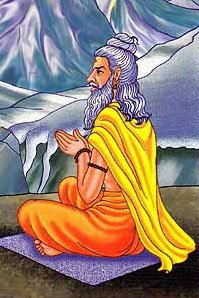Vinataskandha, Vinata-skandha: 1 definition
Introduction:
Vinataskandha means something in Hinduism, Sanskrit. If you want to know the exact meaning, history, etymology or English translation of this term then check out the descriptions on this page. Add your comment or reference to a book if you want to contribute to this summary article.
In Hinduism
Purana and Itihasa (epic history)
Source: archive.org: Shiva Purana - English TranslationVinataskandha (विनतस्कन्ध) means “with shoulders stooping down”, according to the Śivapurāṇa 2.4.5 (“Kārttikeya is crowned”).—Accordingly, after the Kṛttikās spoke to Kārttikeya: “[...] Kumāra reached the foot of a Nyagrodha tree at Kailāsa in the fast chariot along with Nandin seated to his right. [...] Those who looked at Kumāra resembling Śiva saw a great halo pervading the three worlds. Immediately they saluted Kumāra who was enveloped by the brilliant halo, the lustre of molten gold and the refulgence of the sun. With shoulders stooping down (vinataskandha) and eagerly engaged in shouting the cry of “Obeisance” they flanked him to the right and left and stood by. [...]”.

The Purana (पुराण, purāṇas) refers to Sanskrit literature preserving ancient India’s vast cultural history, including historical legends, religious ceremonies, various arts and sciences. The eighteen mahapuranas total over 400,000 shlokas (metrical couplets) and date to at least several centuries BCE.
See also (Relevant definitions)
Relevant text
No search results for Vinataskandha, Vinata-skandha; (plurals include: Vinataskandhas, skandhas) in any book or story.